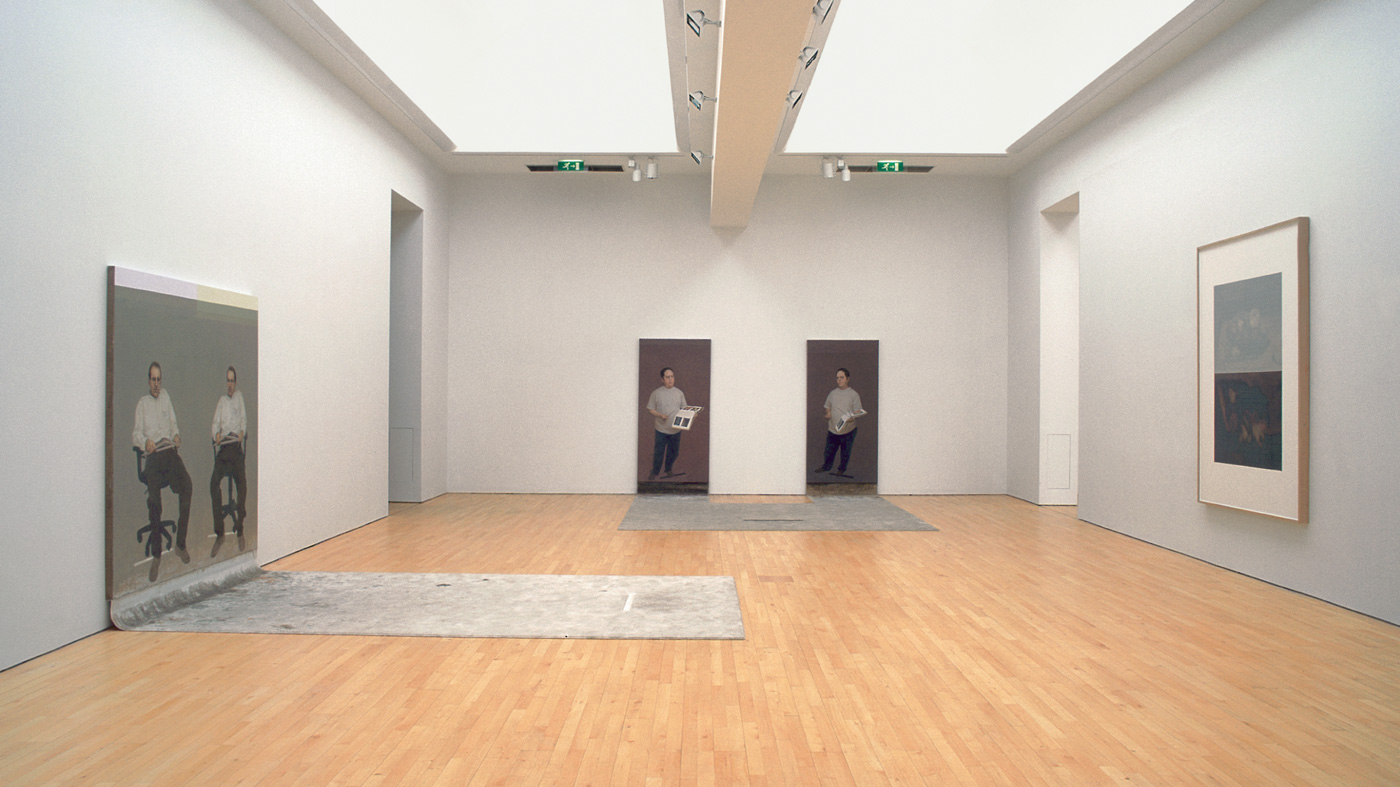Working Painters
2001 – 2002

In Working Painters, the spectator stands on the very same surface Jusidman stood on when making the portraits (the stains on the carpeting attest to it), so the spectator is brought right into the artist’s territory. The painter whom Jusidman portrays contemplates his or her canvas; a kind of mirror image of our observing Jusidman’s work. This mirroring, however, lacks perceptual symmetry, since the portrayed painters, just like Velázquez’s Venus, never look back at the spectator. The painter’s doubled gazes cross mid-way between the spectator and the diptych, implicating an absent canvas at the center of the portrayed painter’s attention. As for ourselves, our attention oscillates between what we are looking at and what we are looking for (namely, what the portrayed painter would be looking at). This mental oscillation between contemplation, self-criticism, and imagining the possible is exactly what a painter undergoes when immersed in the process of making a work of art.
—Eva Wittocx, Painting at Work, 2001
Working Painters is a series of portraits on the subject of painterly attentiveness. I want to differentiate painterly attentiveness from Romantic aestheticized contemplation and from Modernist self-referentiality. Inducing poetic sleepwalking or conjuring pseudo-scientific necessity should not be mistaken for securing the spectator’s meditative involvement. In order to dissipate the specter of Romanticism, my paired portraits disrupt all attempts by the viewer at centering the composition, thereby frustrating the fixed attention of the contemplative stare. Furthermore, the image-pairs suggest stereoscopic vision, yet refuse to blend into a stereoscopic effect, thus “flattening” the pictorial space without bowing to Modernist strictures against figuration. Of course, flatness here is not absolute, as monochrome painting would have it, but rhetorical. Flat space, after all, is an oxymoron. To hollow out a Modernist roadblock, I choose to articulate pictorial space as neither flat nor deep, or perhaps we should say, both flat and deep.
—Yishai Jusidman
src="../wp-content/uploads/yishai-jusidman-working-painters-1.jpg">
src="../wp-content/uploads/yishai-jusidman-working-painters-2.jpg">
src="../wp-content/uploads/yishai-jusidman-working-painters-5.jpg">
src="../wp-content/uploads/yishai-jusidman-working-painters-3.jpg">
src="../wp-content/uploads/yishai-jusidman-working-painters-6.jpg">
src="../wp-content/uploads/yishai-jusidman-working-painters-4.jpg">
